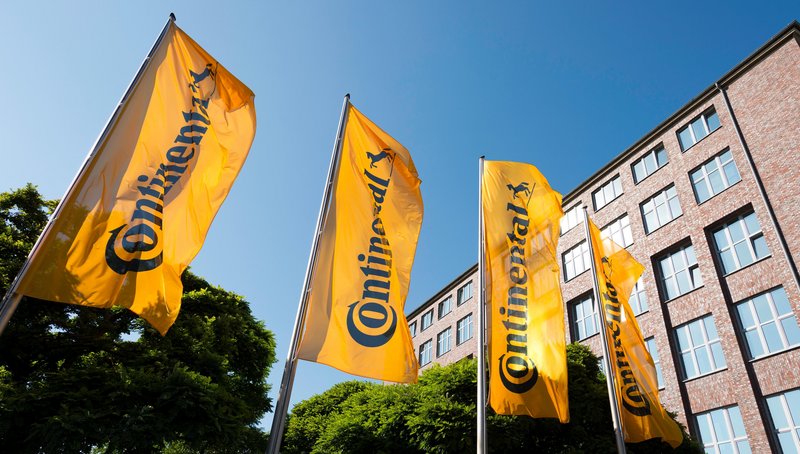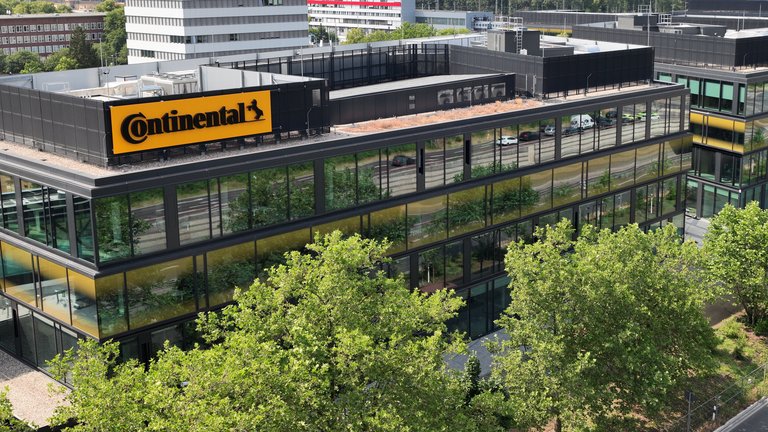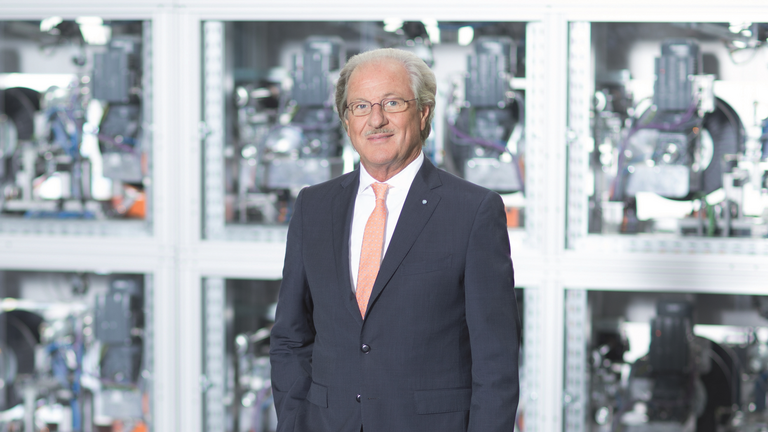Continental to Enhance Long-term Competitiveness and Proactively Shape the Future of Mobility
- Executive Board and Supervisory Board discuss Strategy 2030 and Transformation 2019–2029 structural program
- Solid balance sheet structure and organizational realignment as starting point
- CEO Dr. Elmar Degenhart: “We see the technological upheaval in our industries first and foremost as a huge growth opportunity and are responding proactively to the emerging crisis in the automotive industry”
- Reduction of gross costs by about €500 million annually from 2023
- By 2029: changes in up to 20,000 jobs worldwide and simultaneous expansion of growth areas
- Annual double-digit-million-euro investments in long-term training initiatives for employees
Hanover, September 25, 2019. At the meeting of the Supervisory Board of Continental AG on September 25, 2019, its members and the Executive Board discussed Continental’s Strategy 2030 and the Transformation 2019–2029 structural program. The global program, which the company’s management announced at the end of July 2019, will serve to strengthen the company’s competitiveness over the long term and ensure its viability. Continental is thus responding to the decline in global automotive production and the increase in customer demand for digital solutions. The program also takes into account multiple parallel developments: an increasingly digitalized working environment, the emerging crisis in the automotive industry and the accelerated change in powertrain technology due to more stringent emissions legislation.
The Transformation 2019–2029 structural program has two main aims: to increase efficiency and productivity through adjustments to the organization and portfolio, and a greater focus on key growth areas of the future. As such, Continental plans to reduce its gross costs by about €500 million annually from 2023. The company expects the program to cost around €1.1 billion over its 10-year term. These costs will mostly be incurred between 2019 and 2022. Continental does not rule out additional projects if the current program does not achieve the desired impact.
Worldwide by 2029: changes in up to 20,000 jobs and simultaneous creation of new jobs
According to a preliminary analysis, up to 20,000 of more than 244,000 jobs worldwide are expected to be affected by changes under the structural program over the next 10 years, including about 7,000 of more than 62,000 in Germany. By the end of 2023, around 15,000 jobs are expected to be affected, including about 5,000 in Germany. At the same time, the software-based portfolio will be expanded. A large number of jobs will be created in this sector and in key growth areas in the coming years.
The transformation will have various effects on the affected jobs. These include job cuts due to a number of reasons such as lower business volumes as a result of weaker markets and the discontinuation of operating activities. Changes will also arise from the possible sale of parts of the business and (sub)segments to external parties, as well as from the transfer of jobs to other Continental locations in order to ensure market proximity and/or enhanced competitiveness. Other changes will arise from the transfer of jobs to future technologies such as electric mobility. Finally, changes will also result from the declining number of traditional tasks and activities due to the transition to a digital working world and the structural alignment with the requirements of Industry 4.0.
“Like 10 years ago, we will emerge from this crisis stronger”
Continental CEO Dr. Elmar Degenhart emphasized the company’s ability to act in this regard: “Thanks to our organizational realignment, our solid balance sheet structure and our Strategy 2030, we are well prepared for the challenges ahead. We see the technological upheaval in our industries first and foremost as a huge growth opportunity. With our structural program, we are also responding proactively to the crisis in the automotive industry and, like 10 years ago, we will emerge stronger.”
He added: “The mobility of the future will help protect the climate in three ways: environmentally, economically and socially. This is what we call healthy mobility and is what we are striving for. The technologies it requires are changing our industries – sometimes disruptively so. We are already very well positioned in the key technological areas. With our strategy and our structural program, we are laying the next decisive groundwork and bringing clarity for everyone involved: employees, customers, investors, business partners and other stakeholders.”
Review of structural adjustments at locations in Europe and the U.S.A.
In the meeting on September 25, the Executive Board and Supervisory Board decided to review the required structural adjustments at the following locations:
The Instrumentation & Driver HMI business unit intends to gradually withdraw from mass production at the location in Babenhausen, Germany, by the end of 2025. In addition, in order to reduce development costs to a competitive level, the business unit plans to transfer certain research and development activities from Babenhausen to other locations by the end of 2021. In total, more than 2,200 jobs are likely to be affected by both measures according to initial planning.
The accelerated transition to the future technologies of electric mobility will have an impact on the following four locations:
1. In Roding, Germany, where around 540 people are currently employed, the production and development of hydraulic components for gasoline and diesel engines (high-pressure pumps) is to be discontinued in 2024, with approximately 320 production jobs expected to be affected. For the remaining 220 jobs, the plan is to transfer them to similar functional areas.
2. In Limbach-Oberfrohna, Germany, where around 1,230 people are currently employed, the hydraulic components business for diesel engines (injectors) is to be discontinued in 2028, with approximately 860 production jobs expected to be affected. For the remaining 370 jobs, the plan is to transfer them to similar functional areas.
3. At the location in Pisa, Italy, where around 940 people are currently employed, the production of hydraulic components for gasoline engines (injectors) is to be discontinued between 2023 and 2028, with approximately 500 jobs expected to be affected. For the remaining 440 jobs, the plan is to transfer them to similar functional areas.
4. In addition, discussions will soon begin with the aim of closing the location in Newport News, Virginia, U.S.A., where around 740 people are currently employed, in 2024. Hydraulic components for gasoline engines (injectors) are manufactured at the plant.
Existing customer orders will be fulfilled despite the planned changes.
The Supervisory Board approved the closure of the location in Henderson, North Carolina, U.S.A., where around 650 employees currently produce hydraulic brake systems. The plant has been unable to acquire new customer projects in recent years.
The company’s management also informed the Supervisory Board about the planned cessation of truck tire production at the location in Petaling Jaya, Malaysia, which currently has 270 employees, by the end of 2019.
Any further projects in addition to those mentioned will be prepared in detail and subsequently announced during the course of the structural program. These include certain projects that have already been defined and are related to other strategic options such as the possible sale of individual business segments and subsegments. For negotiating reasons, the company cannot currently provide any further details.
The company’s management and employee representatives will report separately on the results of the joint discussions at a later date in 2019.
CEO Elmar Degenhart said: “Our structural program is designed to have a rapid impact, so that we can successfully head into the future of healthy mobility at full speed. Like our industries, we need to adapt extremely quickly. The program will require our full concentration and its decisive implementation will push us to the limit and sometimes even beyond.”
He added: “We are determined to protect our affected employees as much as possible and offer them prospects for the future. For our structural transformation, we will take advantage of natural fluctuation and demographic change in the coming years. We will also take additional measures to ensure and enhance the employability of our staff.
Operational redundancies will be the very last resort, but we cannot currently rule them out. Should they prove to be unavoidable, we will support our departing employees as best we can.”
Key measures: training initiative and expansion of internal job market
With respect to the future transformation of jobs, Continental has devised a comprehensive training initiative for affected employees. The company and employee representatives laid the foundation for this in April 2018 with a framework agreement on the Continental in Motion program. This program is being further developed in order to successfully tackle the upcoming changes together with the employees as part of a comprehensive approach. Continental in Motion currently comprises three main elements: the recently founded Continental Institute of Technology and Transformation (CITT), a corporate-wide training process and the expansion of the company’s internal job market. The program will be continuously updated with modules for specific employee groups.
With the CITT, Continental will provide its own customized training for employees. In the first step, it will address semi-skilled and unskilled workers in Germany.
A corporate-wide training process should ensure that all employees are prepared for the requirements of the future and enhance their employability. The key points of the initiative have already been agreed, with the underlying requirements and developments defined as part of strategic personnel planning.
With the internal job market, the company and Corporate Works Council have established a standard and transparent process for offering employees vacancies in other subsidiaries. As such, the company far exceeds its statutory requirements.
“As social partners at Continental, Continental in Motion will see us take on responsibility with a view to the future. We will actively shape the transformation rather than simply let it happen,” said Dr. Ariane Reinhart, Executive Board member for Human Relations, adding: “As of now, we will be investing a double-digit-million-euro amount in this standardized training format each year. In this way, we will maintain the employability of our staff in the workplace across the globe. This is an extremely important initiative, especially at a time of severe skills shortages and in view of our future growth in new digital areas.”
Strategy 2030: maximizing profitable growth and enhancing climate protection
The Transformation 2019–2029 structural program is part of Continental’s Strategy 2030. This strategy is designed to help the company achieve a leading position in terms of quality, financial strength and innovative prowess. To this end, Continental will systematically build on its strength in key growth areas and target a continued above-average increase in value creation.
“Our solutions help to ensure safe, clean and intelligent driving and personal mobility. We are therefore making a decisive contribution to climate protection in three ways: environmentally, socially and economically,” said Degenhart.
Key growth areas for Continental include in particular the following:
1. Functional solutions for assisted and automated driving. Continental is already a market leader in these areas. Continental estimates that the market for assisted, automated driving will double about every five years to approximately €30 billion in 2025. In 2018 and 2019 alone, Continental has received orders averaging around €3 billion for assisted and automated driving technologies. Continental expects strong growth in systems for assisted driving and to achieve sales of around €2 billion in 2019 alone.
2. Functional solutions for connected driving. With more than 20 years of experience and over 33 million connected vehicles, Continental offers a whole range of functions in this area: from the antenna to the display, from the safety software to the electronic control unit.
3. Integrated software-based system solutions. These include a growing number of services for mobility customers. This market currently generates sales of around $30 billion but is expected to account for a sales volume of around $1,500 billion by 2030.
4. In addition, the technology company is promoting organic growth in its tire business with the goal of becoming one of the top three suppliers worldwide. Between 2011 and 2018, Continental invested more than €1 billion in the expansion of production capacity.
5. Continental is also expanding its business with industrial customers and end customers (including conveyor belts, hoses, spare tires and auto spare parts) beyond its original equipment business with automobile manufacturers. These include customers in agriculture, railway engineering, mining and construction. Targeted future share of consolidated sales: 40 percent (currently around 30 percent). The company thus intends to reduce its dependence on the original equipment business with automobile manufacturers, which is subject to cyclical economic trends.
Continental is also gearing its Powertrain division (future name: Vitesco Technologies) to achieve profitable growth with electric mobility. Based on its strong expertise in the area of electronics, sensors and actuators, Continental is one of the few system providers for high-voltage components and hybridization solutions. Order intake in the powertrain business amounted to about €11 billion last year, of which around €2 billion was attributable to the electric mobility segment.




